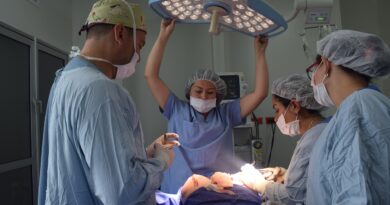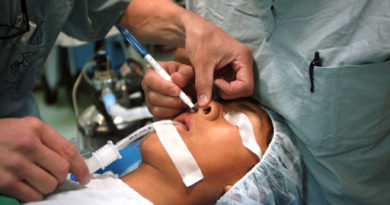Cancer – Our Second Greatest Cause Of Death
Cancer ranks after diseases of the heart and blood vessel diseases as the major killer today. It is probably the most feared of all diseases. Millions of people are victims of “cancerphobia”, much of which is the result of reading without complete understanding. “Symptoms hunting” without real cause for concern, and the false impression that all cancer is a hopeless, terminal condition.
What Is Cancer?
Cancer is a disorderly growth of cells in body tissue. These cells serve no purpose; yet multiply at an amazing rate in many forms of cancer. A growing mass of cancerous cells, referred to as a malignant tumor, crowds out normal tissue and absorbs vital nutrients. Fragments of a cancerous growth may separate from a primary mass and travel through the blood and lymph to other body regions. This spread to new areas is referred to as metastasis. The rate at which metastasis occurs varies with the kind of cancer and its location.
There are two main types of cancer; carcinoma and sarcoma. Carcinoma arises in cells of the skin and in tissues lining internal organs (epithelial tissues). Sarcoma arises in bone, lymph glands, and other connective tissues. Some cancers are very slow-growing. These are more common in older people. Others may double in size within a month. Regardless of the rate of growth, however, most cancers can be arrested or cured if they are found before vital tissues are destroyed or metastasis has occurred. Thus, early detection and treatment are extremely important.
Related Story
Possible Causes of Cancer
The cause of cancer has not yet been determined. Undoubtedly, there are many causes, just as there are many kinds of cancer. Evidence points strongly toward several factors, which may cause cancer.
1. Irritation of tissues may be one cause. Such irritants may be tars in tobacco, products formed by burning cigarette paper, or toxic fumes inhaled. Cigars, pipe stems, and other objects may irritate the mouth, tongue, or lips and cause cancer.
2. Radiation is believed to be another cause. Such radiation may be ultraviolet radiation emitted from radioactive isotopes of various chemical elements.
3. Distorted enzymes in cells of the body may be another cause. These chemical substances control various processes of the cell and, if they become altered, could change its chemical activity.
4. Scientists consider hormonal imbalance another likely cause of certain kinds of cancer. Hormones have been used to cause cancer in some cases and to correct it in others in laboratory animals.
5. Genetic changes in cells may be another cause. DNA is known to determine the genetic properties of a cell – its form as well as its functions and chemical activities. Any change in cell and might cause it to become cancerous. Radiation could be a cause for this genetic change.
6.Viruses are being investigated extensively as possible causes of some forms of cancer, including sarcomas of the lymph glands as well as various leukemias.
7. Still another possible cause of changes in the body chemistry with aging. This might explain why certain forms of cancer are prevalent in older people.
FYI
| A new development in cancer treatment is proton therapy, which is a form of advanced therapy. The therapy is still to be known worldwide. In this therapy, proton beams are to be deposited in the target area and significantly reduce normal tissue exposure to excess radiation. |
Frequent Locations of Cancer
While cancer may develop in nearly any body tissue, certain organs and regions are more frequently associated with cancer than others. The following cancer sites are described briefly in the general order frequency of new cases reported each year.
Colon and Rectal Cancer – It is the most prevalent of all forms. The American Medical Association has estimated the number of new cases each year at about 73,000 and annual deaths at about 40,000. This rate could be cut by more than half with early detection by a colon and rectal examination as a part of a routine physical examination.
Skin Cancer – Various forms of skin cancer rank second in the number of new cases reported each year, yet the death rate is less than one in 15 cases. Skin cancers are the most easily detected and most easily cured. In fact, skin cancer is nearly 100 percent curable if treatment is started in time. Skin cancers appear more frequently in men than in women and are more common in older people. More fair-skinned people develop skin cancer than darker complexioned people, especially those who over-expose themselves to the sun.
Breast Cancer – Breast cancer is the leading cause of cancer deaths in women. The American Medical Association estimates that nearly 64,000 women in the United States develop breast cancer each year and that 25,000 of these cases are fatal. A large number of these deaths can be prevented if the cancers are discovered in time. A doctor can show a woman how to examine her own breasts periodically to detect any small, hard lumps. These should be reported to the doctor at once. In most cases, such lumps prove to be non-cancerous and no cause for alarm. About 95 percent of cases of surgery for breast cancer reveal a tumor, which could have been found by examination much earlier. This indicates the need for education in the early detection of breast cancers.
Lung Cancer – Lung cancer is increased steadily in recent years and is a real cause for alarm. Unless detected and treated in its early stages, lung cancer is 95 percent fatal. The lung-cancer risk among cigarette smokers is the more prevalent. This form of cancer is more prevalent in men than in women. Periodic chest X-ray photographs will reveal early lung cancer. Surgery may prevent about half of the deaths if the condition is discovered in time.
Cancer of the Uterus – It was once the most frequent cause of cancer deaths in women. However, in recent years the mortality rate has been reduced to one in four. The reason for this great reduction is periodic pelvic examinations. As a part of this examination, the doctor takes a “Pap” smear of tissue from the neck (cervix) of the uterus, the most common site of uterine cancer. Microscopic examination of this tissue will reveal cancer in an early, curable stage.
Leukemia – It is the most frequent cause of cancer deaths in children. While leukemia is often referred to as cancer of the blood, the disease centers in the bone marrow or in the lymph glands where white corpuscles are formed. Most cases of leukemia in children are the acute form of the disease. Chronic leukemia, however, is a disease that usually appears much later in life.
Cancer of Stomach
Stomach cancer begins as an open sore, which doesn’t heal. As it spreads, it involves more and more of the stomach wall. The lining, muscle layers, and blood vessels are gradually invaded or destroyed. Early stomach cancer may give no more severe symptoms than slight indigestion and stomach distress after eating. This is unfortunate because the person often wastes valuable time in trying various self-prescribed treatments for indigestion. By the time the doctor discovers the condition, much of the stomach may be involved. The problem is increased by spread, or metastasis, of fragments of the cancer through circulation to other parts of the body. If the cancer is discovered before this happens, part of the stomach, or the entire stomach, can be removed. It is amazing how well the small intestine takes over most of the stomach’s functions when this is done.
The important thing to remember about cancer is that it can be cured if it is found and treated in its earlier stages. If more people were familiar with this fact, the following figures for reduced. Stomach cancer is responsible for one out ten cancer deaths. About 22,000 people in the United States die each year from cancer of the stomach. Among people over 40, cancer of the stomach causes one out of every 50 deaths from all causes.
Cancer Of The Colon
Next to the stomach, the colon is the most common location of cancer of the digestive tract. About 80 percent of all such cancers are situated in or just above the rectum, within the reach of an examining finger. The frequency of cancer decreases in the higher regions of the colon. Cancers rarely occur in the small intestine.
The earlier symptom of colon cancer is bleeding. As the growth enlarges and begins to block the colon, the size of the bowel movement decreases. It may finally become ribbonlike. Alternating constipation and diarrhea commonly occur. Any of these symptoms should be investigated by a doctor without delay. He will examine the rectum and may order X-rays. In most cases, the best treatment of cancer of the colon is the surgical removal of the diseased area. When a diagnosis is made early enough, there is an excellent chance for a complete cure for this type of cancer.
Treatments of Cancer
Three general kinds of treatment are used in dealing with cancer today. Surgery and radiation may affect a complete cure if the entire cancer can be removed or destroyed. Drugs are effecting in arresting certain kinds of cancer, although they do not care the condition. After a time, cancer resists drugs and the condition progress further.
Surgical treatment of cancer is improving constantly. Newer anesthetics permit more lengthy and extensive operations without danger to the patient. This allows the surgeon to remove more extensive cancers which, a few years ago, would have been inoperable. Transfusions are more easily provided before, during, and after cancer surgery. Antibiotics are also available for dealing with problems of infection.
Six out ten cancer patients receive radiation treatments today. Newer multimillion volt –ray machines send penetrating rays to the deepest tissues to reach a cancerous growth. Improvement in the control of X-rays allows lethal doses to be concentrated on cancer with minimum damage to adjacent normal tissue. Various radioactive isotopes, including radium, cobalt, cesium, gold, phosphorus, and iodine, are used to bombard cancer cells with lethal radiation. These radioactive materials may be placed on the body or inserted into the body at a cancer site. In some cases, they are delivered to the cancer site in the bloodstream.
Many thousands of anticancer drugs are being tested in research laboratories each year. Test subjects may be cancer cells in test tubes or animals with experimentally induced cancer. Among these drugs are hormones, which retard certain kinds of cancer, including breast cancer and cancer of the prostate. Cell poisons, including nitrogen mustard, are used against lung cancer, breast cancer, leukemia, lymphoma, and other forms of cancer with temporary success. Another group of drugs, classified as antimetabolites starve cancer cells by interfering with their life processes. Among these is a group of drugs called antifolics, which are related to the vitamin B-12 complex, folic acid. Certain antibiotics, including azaserne and actinomycin D are among the newest anticancer drugs.
Anticancer drugs may cause damage to normal cells. Damage to white corpuscles, bone marrow, and cells forming the lining of the digestive organs may occur as a result of their use. On the other hand, drugs offer the only hope for treating cancer, which has advanced beyond treatment by surgery or radiation. Even though these drugs do not cure cancer, they are of great value if they retard a cancerous growth temporarily, relieve pain, and prolong life.
Get updates and read additional stories on the Health Orbit Fan Page.
For Guest posts, Sponsored posts and other details, please click ‘Contact Us’ page.




